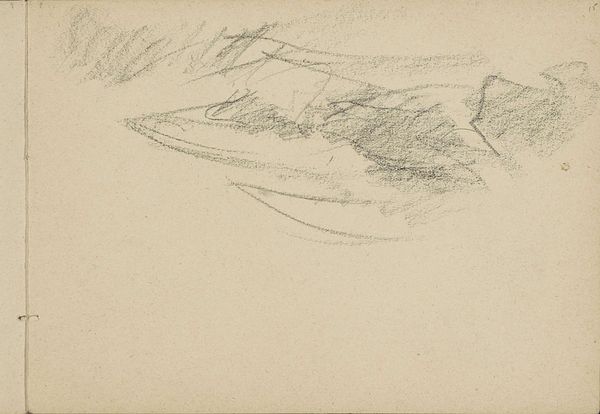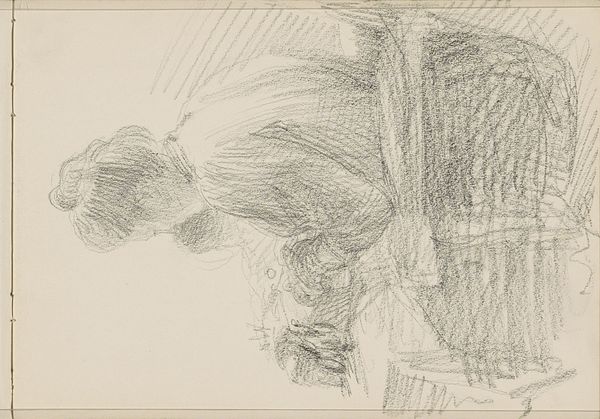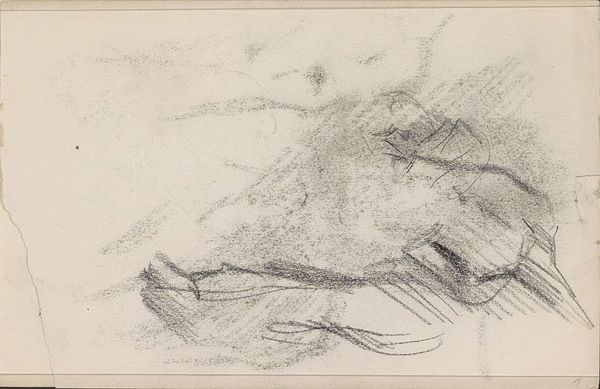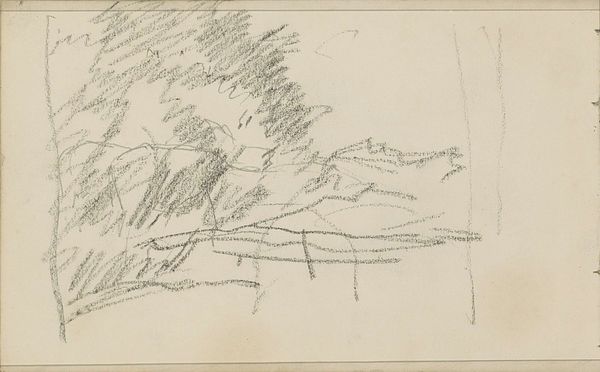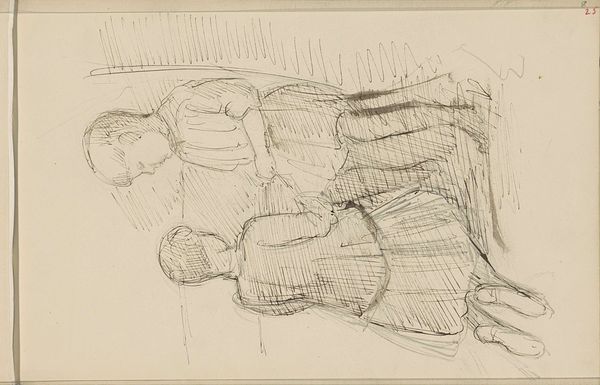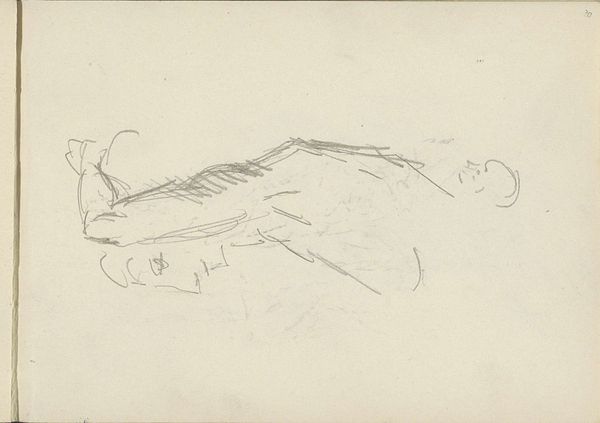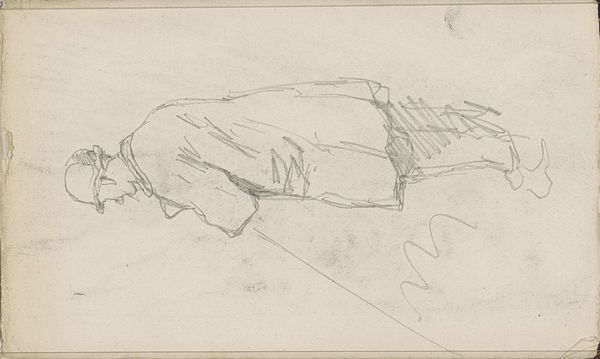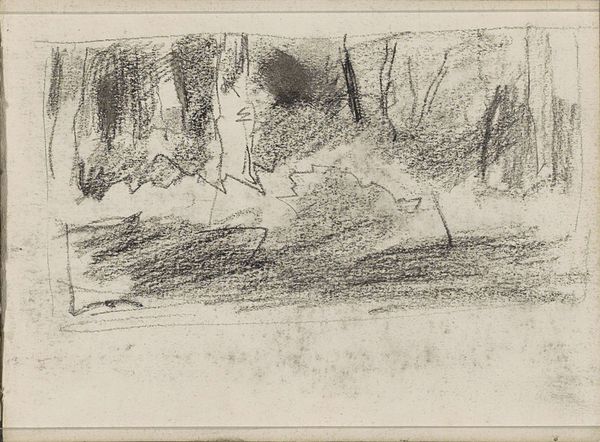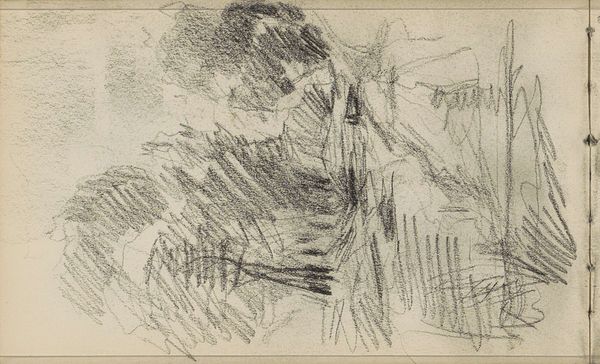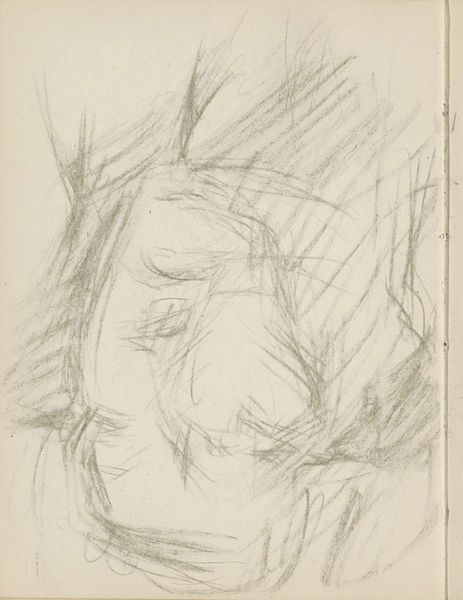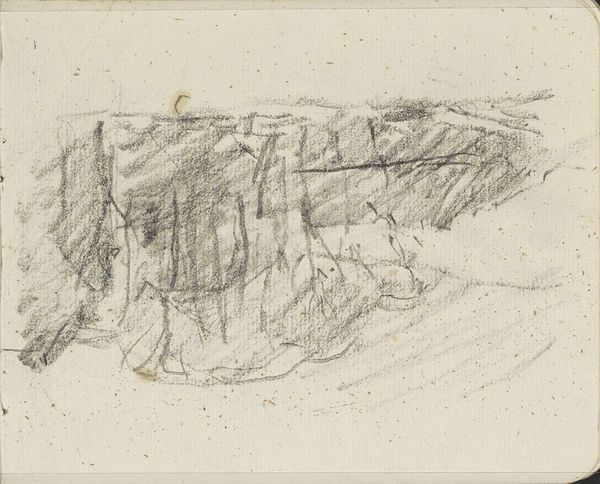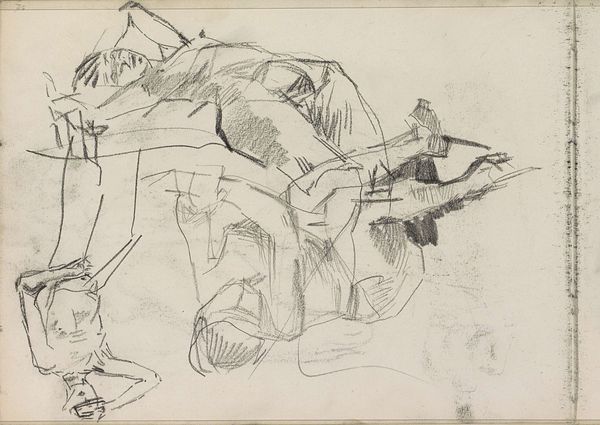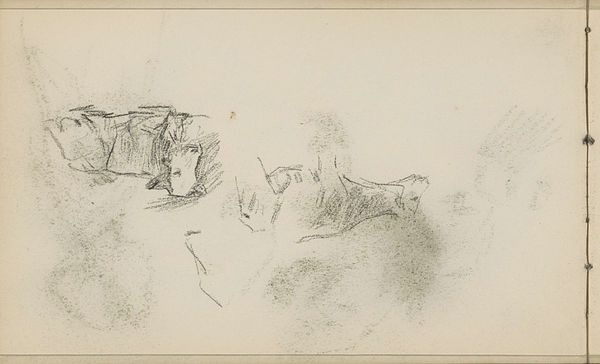
drawing, paper, pencil
#
drawing
#
pencil sketch
#
landscape
#
etching
#
paper
#
pencil
#
pencil work
#
northern-renaissance
#
realism
Copyright: Rijks Museum: Open Domain
Curator: This is a pencil drawing entitled "Landschap," created by Bramine Hubrecht, likely sometime between 1865 and 1913. It's currently held in the collection of the Rijksmuseum. Editor: It's striking how light the rendering is; it almost feels like the mountain is emerging from a mist. The strokes are so quick and light. Curator: Yes, notice the economical use of the pencil. It's fascinating to think about how this landscape connects to broader trends in the 19th century, a period deeply involved in grappling with humanity’s relationship with the natural world and our changing conceptions of the sublime. The very act of depicting a landscape, particularly a relatively untouched one, speaks to certain notions of progress, or anxieties of losing the pastoral ideal. Editor: The drawing also emphasizes the basic elements: paper, pencil, hand. How labor intensive was the process? Where was this paper sourced? Considering these fundamental material aspects, we gain an insight into the art as not just an image but as a physical record of human interaction with available resources. Curator: I completely agree. Hubrecht, as a woman artist during this period, faced specific challenges in accessing the same training and recognition as her male counterparts. Exploring these societal dynamics, thinking about what resources were available for female artists, can give us further understanding of artistic achievements within constraints. Editor: Indeed. The very sketch-like quality pushes one to see artmaking as work, which has often been disregarded. The landscape genre connects the materiality of our world directly to its representations, influencing cultural perceptions. Curator: Thinking about it in terms of access and labor reveals subtle resistance and innovation. There's a sense of freedom and fluidity within it that almost transcends the traditional notions of "landscape art" at the time. Editor: Absolutely. By acknowledging that her landscapes are formed by material circumstance, and cultural context, her statement becomes rather revolutionary for the time. Curator: Precisely. By examining historical and societal factors alongside its formal aspects, our understanding of Hubrecht’s “Landschap” goes further, acknowledging artistic resilience and insightful representation. Editor: I'm left pondering on how art reflects material practices embedded with ideological, even if subtle, power.
Comments
No comments
Be the first to comment and join the conversation on the ultimate creative platform.
